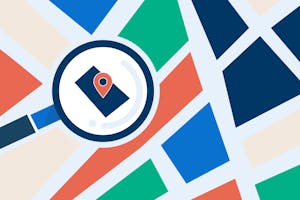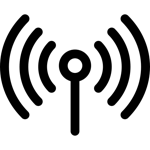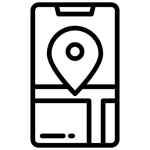- 7 minutes
- COVID-19 Resources
- Local Strategies
- SEO
- Websites
Beginner,
Intermediate
Join hundreds of other operators and REGISTER NOW for Spark 2024 New Orleans October 13-15th!

Proximity marketing is a marketing strategy that’s all about delivering highly relevant and personalized content to your target audience at the opportune time. It’s a technique that enhances the customer experience, leading to increased bookings and user engagement. Also known as hyper-local marketing, proximity marketing allows you to reach your customer at the right place, at the right time – when they are near to your business. Everyone has found themselves on a vacation where they know that they want to participate in local tours and activities, but they’re not sure which ones, or when. Proximity marketing can help! Campaigns work by sending text messages or push notifications to people who are geographically close to your business – and the goal is to entice the recipient to make a booking decision by showing them what’s right in front of them!
Unlike other digital marketing techniques, proximity marketing relies completely on the user’s smartphone to deliver a notification and advertise a tour or activity. If you’ve ever scanned a QR code to reveal an offer, you’ve engaged with a proximity marketing campaign! There are several other methods companies can utilize, such as WiFi, geofencing, beacons, and more.
Appealing to local bookers is more important than ever, and proximity marketing can be a great way to reach new customers in your area. This guide will give an overview of proximity marketing and the different types you can employ to market your tours and activities.
You might be wondering why you should spend time on proximity marketing when there are so many other marketing methods out there. It can be difficult to allocate your marketing budget where it will have the most impact, but when it comes to proximity marketing, you can almost guarantee that users will receive your messaging. Whether they’re scanning a QR code or receiving a text message, the result is direct and immediate — there’s no waiting around to see if a person opened your email newsletter or saw your recent Facebook post.
In fact, when it comes to beacons – Bluetooth devices that broadcast notifications to smartphones nearby (more on these later) – proximity marketing turns your target audience into anyone who is near your business, which can lead to immediate conversions. For you, that means less guesswork and trying to identify your target audience. Take a look at some other reasons to invest in proximity marketing.
 Potential Customers Are Already on Their Phones
Potential Customers Are Already on Their PhonesYour potential customers may not be researching nearby tours and activities right at this exact moment — but there’s a good chance they’re on their phones, especially if they’re traveling. In fact, nearly two-thirds of travelers rely on mobile apps during their trip (Travelport), and 79% of travelers completed a booking after doing research on their smartphone in 2017 (Google/Ipsos Connect). Whether they’re pulling up a map of your city, looking for a local restaurant, or browsing the web for things to do in the area, chances are, they’re going to notice a notification pop onto their screen sooner rather than later.
 Beacons Drive Immediate Purchases
Beacons Drive Immediate PurchasesPeople are more likely to make a purchase or booking when they are nearby. So if they get a text informing them that there are a few seats left on your afternoon whale watching tour, their proximity to your business (combined with the fear of losing out on those seats) can prompt an immediate booking. These hyper-relevant notifications can be the tipping factor for a traveler who likes to fly by the seat of their pants and doesn’t have their whole day planned out yet.
 Gain an Edge Over Your Competitors
Gain an Edge Over Your CompetitorsGive your brand a competitive edge with proximity marketing. Setting up a geofence – a specific area where people receive ad notifications for your business – is a great way to make your brand more visible compared to your competition. This is especially important if your business operates in a popular area where your competition is nearby, for example, if you both rent paddle boards and kayaks on the same beach. With proximity marketing, you can send messages to people in the area, prompting them to check out your rentals instead of heading down the beach to your competitor.
Bluetooth beacons are tiny, battery-powered Bluetooth devices that transmit location-triggered notifications to smartphones nearby. These devices make interacting with potential customers and location-based searching even easier. Beacons work by sending a signal to any smartphone with Bluetooth turned on, and they’re a low-cost, low-power way to boost your marketing initiatives. Because of beacons’ ability to source customer data around location, personal interests, activity, and time of day, tour and activity operators have a huge window of opportunity when it comes to filling those last-minute availabilities.
NFC stands for Near Field Communication and is a proximity marketing channel used to interact with a location or business at a small distance. It usually takes the form of stickers or tags that are embedded at displays or on products. For example, let’s say you’re traveling around a new city and need to take a bus. By scanning an NFC tag at the bus stop, you can pull up routes, trip planners, and city guides, making your experience much more convenient. Or perhaps you’re visiting a museum and want to know more about a specific painting. NFC tags let you scan the code and deliver immediate content that tells you everything you need to know.
So how can tour and activity operators make the most of NFC technology? Consider putting up posters or other physical advertisements with an NFC tag that customers can scan for a promo code or special discount and be taken straight to the book form. Or offer guests the option to check in by tapping the tag at your location to receive a discount.
Did you know that 96% of customers prefer locations that offer free WiFi? According to the same Yankee Group study, these people are likely to return to places that offer internet access for free. And if your tour guests love snapping photos during their experience, they’ll be happy to know they can post their pics to Instagram right after the tour.
Another huge benefit of offering free WiFi is the potential for additional marketing. When allowing access to your WiFi network, you can prompt customers to take several actions such as liking or following your business on social media, signing up for your newsletter, and even asking them to leave a review. This allows you to turn guests into repeat customers who continue to engage with your brand. Plus, since you likely already have WiFi enabled at your business, this marketing tactic doesn’t have to break the bank.
Geofence marketing targets users with advertisements based on a specific location, which you can make as small as even 1,000 square feet. Think of this tactic like creating a virtual fence that you can place around your business or in your general area to target people with a specific campaign for your geofence. Whenever someone enters your geofence with the appropriate smartphone, the internet records their location and they become eligible to receive your advertisements. You can even place a geofence at a nearby bus stop or at your competitor’s location to send potential customers your way.
 Proximity marketing is personalized and immediate and is ideal for tour operators who are trying to fill last-minute availabilities or are looking for a new method of spicing up their marketing efforts. With multiple proximity marketing technologies available, it can feel overwhelming to know where to begin. We suggest starting with WiFi marketing, as it’s an easily accessible option for many businesses and gives you the opportunity to boost your email list, grow your followers, and create repeat customers. For more tips on marketing your tours and activities, take a look at our digital marketing guides.
Proximity marketing is personalized and immediate and is ideal for tour operators who are trying to fill last-minute availabilities or are looking for a new method of spicing up their marketing efforts. With multiple proximity marketing technologies available, it can feel overwhelming to know where to begin. We suggest starting with WiFi marketing, as it’s an easily accessible option for many businesses and gives you the opportunity to boost your email list, grow your followers, and create repeat customers. For more tips on marketing your tours and activities, take a look at our digital marketing guides.